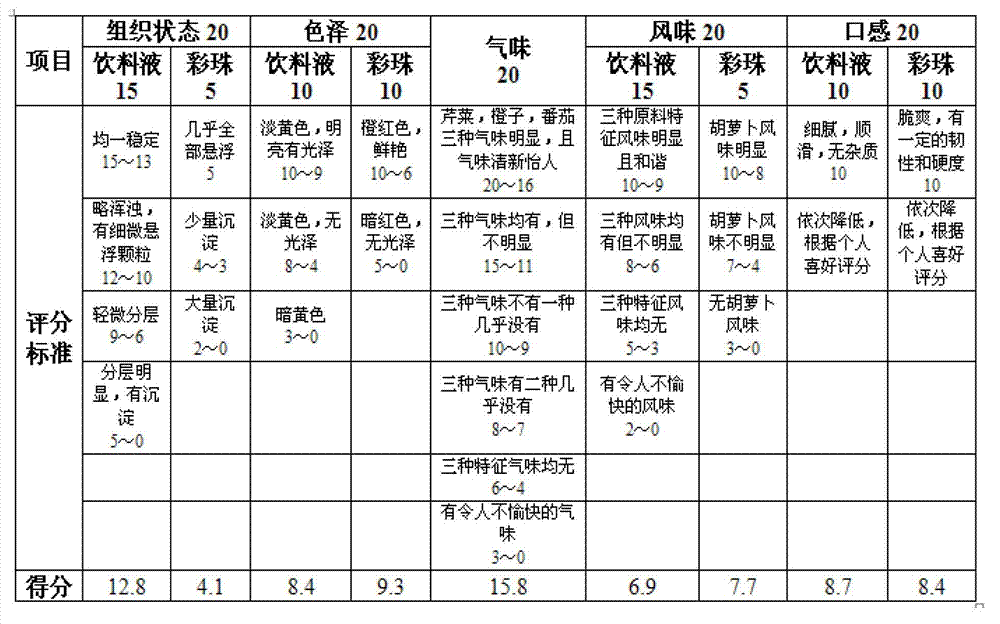Fruit-vegetable composite granule beverage and preparation method thereof
A composite particle, fruit and vegetable technology, applied in the field of food and beverages, can solve the problems that the taste is not as good as gel particles, does not conform to natural green, and has a single nutritional component, and achieves the effect of stable suspension of colored beads, sweet and sour taste, and rich nutrition.
- Summary
- Abstract
- Description
- Claims
- Application Information
AI Technical Summary
Problems solved by technology
Method used
Image
Examples
Embodiment 1
[0029] Embodiment 1 prepares fruit and vegetable composite particle beverage
[0030] 1. Raw material ratio
[0031] In terms of weight percentage, it is prepared from the following raw materials: celery juice 20%, orange juice 25%, tomato juice 5%, carrot colored beads 3%, suspending agent (sodium carboxymethylcellulose, CMC) 0.4%, white sugar 5% %, preservative (potassium sorbate) 0.5‰, antioxidant (sodium erythorbate) 0.1‰, and the balance is water.
[0032] Among them, when preparing carrot colored beads, the amount of each raw material used per liter of carrot juice is: sodium alginate 15g, gelatin 10g, white sugar 100g, preservative (potassium sorbate) 0.5g, calcium chloride 30g, the process flow Such as figure 2 shown.
[0033] 2. Specific preparation steps
[0034] a, the preparation of carrot colored beads
[0035] (1) Preparation of calcium chloride solution: Dissolve edible calcium chloride in water naturally in proportion without stirring.
[0036](2) Select...
PUM
 Login to View More
Login to View More Abstract
Description
Claims
Application Information
 Login to View More
Login to View More - R&D
- Intellectual Property
- Life Sciences
- Materials
- Tech Scout
- Unparalleled Data Quality
- Higher Quality Content
- 60% Fewer Hallucinations
Browse by: Latest US Patents, China's latest patents, Technical Efficacy Thesaurus, Application Domain, Technology Topic, Popular Technical Reports.
© 2025 PatSnap. All rights reserved.Legal|Privacy policy|Modern Slavery Act Transparency Statement|Sitemap|About US| Contact US: help@patsnap.com


